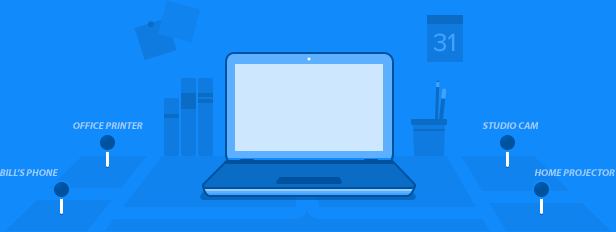. One WAN1 port for connecting to your public switch or router and the Internet,. One WAN2 port for connecting to a second public switch or router and the Internet for a redundant Internet connection, 01-20050128 Fortinet Inc.
Configuring log forwarding
Forwarding mode only requires configuration on the client side. No configuration is needed on the server side. In aggregation mode, accepting the logs must be enabled on the FortiAnalyzer that is acting as the server.
- Fortinet delivers high-performance network security solutions that protect your network, users, and data from continually evolving threats. Our broad portfolio of top-rated solutions and centralized management enables security consolidation and delivers a simplified, end-to-end security infrastructure.
- Hover the cursor over a device icon, port number, or endpoint to open a tooltip that shows information about that specific device, port, or endpoint. Right-click on a device to log in to it or to deauthorize it.
Forwarding mode
Forwarding mode can be configured in the GUI. No configuration is required on the server side.

To configure the client:
- Go to System Settings > Log Forwarding.
- Click Create New in the toolbar. The Create New Log Forwarding pane opens.
- Fill in the information as per the below table, then click OK to create the new log forwarding. The FortiAnalyzer device will start forwarding logs to the server.
Name
Enter a name for the remote server.
Status
Set to On to enable log forwarding. Set to Off to disable log forwarding.
Remote Server Type
Select the type of remote server to which you are forwarding logs: FortiAnalyzer, Syslog, or Common Event Format (CEF).
Server IP
Enter the IP address of the remote server.
Server Port
Enter the server port number. Default: 514.
This option is only available when the server type in not FortiAnalyzer.
Reliable Connection
Turn on to use TCP connection. Turn off to use UDP connection.
If you are forwarding logs to a Syslog or CEF server, ensure this option is supported before turning it on.
Sending Frequency
Select when logs will be sent to the server: Real-time, Every 1 Minute, or Every 5 Minutes (default).
This option is only available when the server type is FortiAnalyzer.
Log Forwarding Filters
Device Filters
Click Select Device, then select the devices whose logs will be forwarded.
Log Filters
Turn on to configure filter on the logs that are forwarded.
Select All or Any of the Following Conditions in the Log messages that match field to control how the filters are applied to the logs.
Add filters to the table by selecting the Log Field, Match Criteria, and Value for each filter.
Enable Exclusions
This option is only available when the remove server is a Syslog or CEF server.
Turn on to configure filter on the logs that are forwarded.
Add exclusions to the table by selecting the Device Type and Log Type. Then, add Log Fields to the Exclusion List by clicking Fields and specifying the excluded log fields in the Select Log Field pane.


Devices whose logs are being forwarded to another FortiAnalyzer device are added to the server as unregistered devices. To register devices, see Adding devices manually. |
Aggregation mode

Aggregation mode can only be configured using the CLI. Aggregation mode configurations are not listed in the GUI table, but still use a log forwarding ID number.
Use the following CLI command to see what log forwarding IDs have been used: get system log-forward |

To configure the server:
- If required, create a new administrator with the Super_User profile. See Creating administrators.
- Enable log aggregation and, if necessary, configure the disk quota, with the following CLI commands:
config system log-forward-service
set accept-aggregation enable
set aggregation-disk-quota <quota>
end
To configure the client:
- Open the log forwarding command shell:
config system log-forward
- Create a new, or edit an existing, log forwarding entry:
edit <log forwarding ID>
- Set the log forwarding mode to
aggregation:set mode aggregation
- Set the server display name and IP address:
set server-name <string>
set server-ip <xxx.xxx.xxx.xxx>
- Enter the user name and password of the super user administrator on the server:
set agg-user <string>
set agg-password <string>
- If required, set the aggregation time from 0 to 23 hours (default: 0, or midnight):
set agg-time <integer>
- Enter the following to apply the configuration and create the log aggregation:
end
The following line will be displayed to confirm the creation of the log aggregation:
check for cfg[<log forwarding ID>] svr_disp_name=<server-name>
For more information, see the FortiAnalyzer CLI Reference. |
This topic is intended for OEMs who want to build a Windows 10 system with USB Type-C connector and want to leverage OS features that allow for faster charging, power delivery, dual role, alternate modes, and error notifications through Billboard devices.
A traditional USB connection uses a cable with a USB A and USB B connector on each end. The USB A connector always plugs in to the host side and the USB B connector connects the function side, which is a device (phone) or peripheral (mouse, keyboard). By using those connectors, you can only connect a host to a function; never a host to another host or a function to another function. The host is the power source provider and the function consumes power from the host.
The traditional configuration limits some scenarios. For example, if a mobile device wants to connect to a peripheral, the device must act as the host and deliver power to the connected device.
The USB Type-C connector, introduced by the USB-IF, defined in the USB 3.1 specification, addresses those limitations. Windows 10 introduces native support for those features.
Feature summary
- Allows for faster charging up to 100W with Power Delivery over USB Type-C.
- Single connector for both USB Hosts and USB Devices.
- Can switch USB roles to support a USB host or device.
- Can switch power roles between sourcing and sinking power.
- Supports other protocols like DisplayPort and Thunderbolt over USB Type-C.
- Introduces USB Billboard device class to provide error notifications for Alternate Modes.
Official specifications
Hardware design
USB Type-C connector is reversible and symmetric.
The main component are: the USB Type-C connector and its port or PD controller that manages the CC pin logic for the connector. Such systems typically have a dual-role controller that can swap the USB role from host to function. It has Display-Out module that allows video signal to be transmitted over USB. Optionally it can support BC1.2 charger detection.
Consider recommendations for the design and development of USB components, including minimum hardware requirements, Windows Hardware Compatibility Program requirements, and other recommendations that build on those requirements.Hardware component guidelines USB
Choose a driver model
Use this flow chart to determine a solution for your USB Type-C system.
Fortinet Routers
| If your system... | Recommended solution... |
|---|---|
| Does not implement PD state machines | Write a client driver to the UcmTcpciCx class extension. Write a USB Type-C port controller driver |
| Implements PD state machines in hardware or firmware and support USB Type-C Connector System Software Interface (UCSI) over ACPI | Load the Microsoft provided in-box drivers, UcmUcsiCx.sys and UcmUcsiAcpiClient.sys. See UCSI driver. |
| Implements PD state machines in hardware or firmware, but either does not support UCSI, or support UCSI but requires a transport other than ACPI | Write a client driver for the UcmCx class extension. Write a USB Type-C connector driver Write a USB Type-C Policy Manager client driver |
| Implements UCSI but requires a transport other than ACPI | Write a client driver to the UcmUcsiCx class extension. Use this sample template and modify it based on a transport that your hardware uses. Write a UCSI client driver |
Bring up drivers
USB Function driver bring-up is only required if you support USB Function mode. If you previously implemented a USB Function driver for a USB micro-B connector, describe the appropriate connectors as USB Type-C in the ACPI tables for the USB Function driver to continue working.
For more information, see instructions about writing a USB Function driver.
USB Role-Switch driver bring-up is only required for devices that have a Dual Role controller that assumes both Host and Function roles. To bring-up the USB Role-Switch driver, you need to modify the ACPI tables to enable the Microsoft in-box USB role-switch driver.
For more information, see the guidance for bringing up the USB Role Switch Driver.
A USB Connector Manager Driver is required for Windows to manage the USB Type-C ports on a system. The bring-up tasks for a USB Connector Manager driver depend on the driver that you choose for the USB Type-C ports: The Microsoft in-box UCSI (UcmUcsiCx.sys and UcmUcsiAcpiClient.sys) driver, a UcmCx client driver, or a UcmTcpciCx client driver. For more information, see the links in the preceding section that describe how to choose the right solution for your USB Type-C system.
Test
Perform various functional and stress tests on systems and devices that expose a USB Type-C connector.
Test USB Type-C systems with USB Type-C ConnEx - Run USB tests included in the Windows Hardware Lab Kit (HLK) for Windows 10.
Run USB function HLK tests with a C-to-A cable (search for Windows USB Device in the HLK
Certification/ComplianceAttend Power Delivery and USB Type-C compliance workshops hosted by the standards bodies.
Drivers Fortinet Port Devices List
See also
